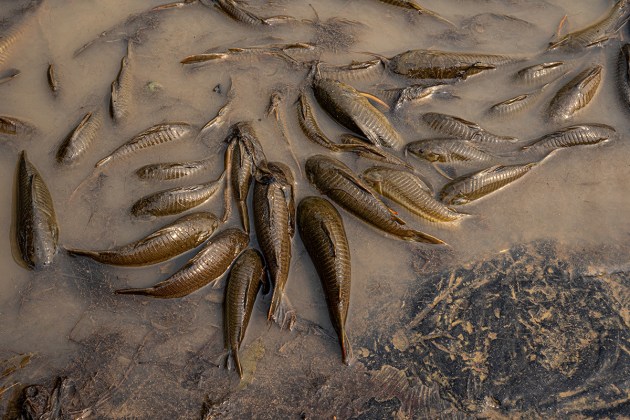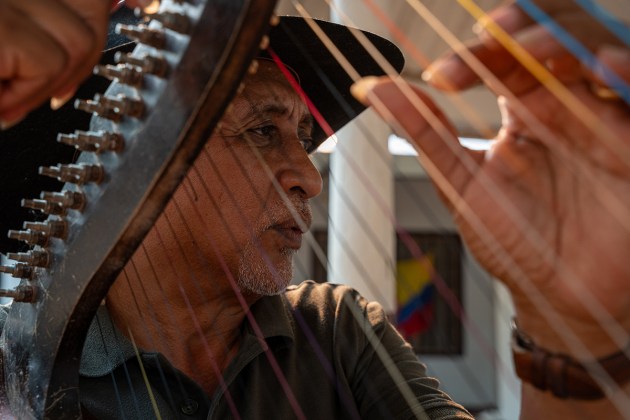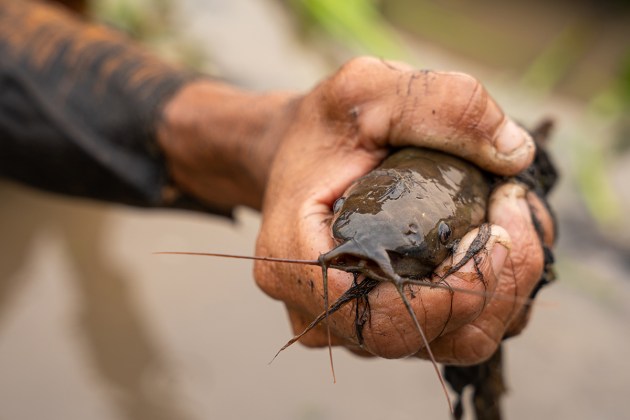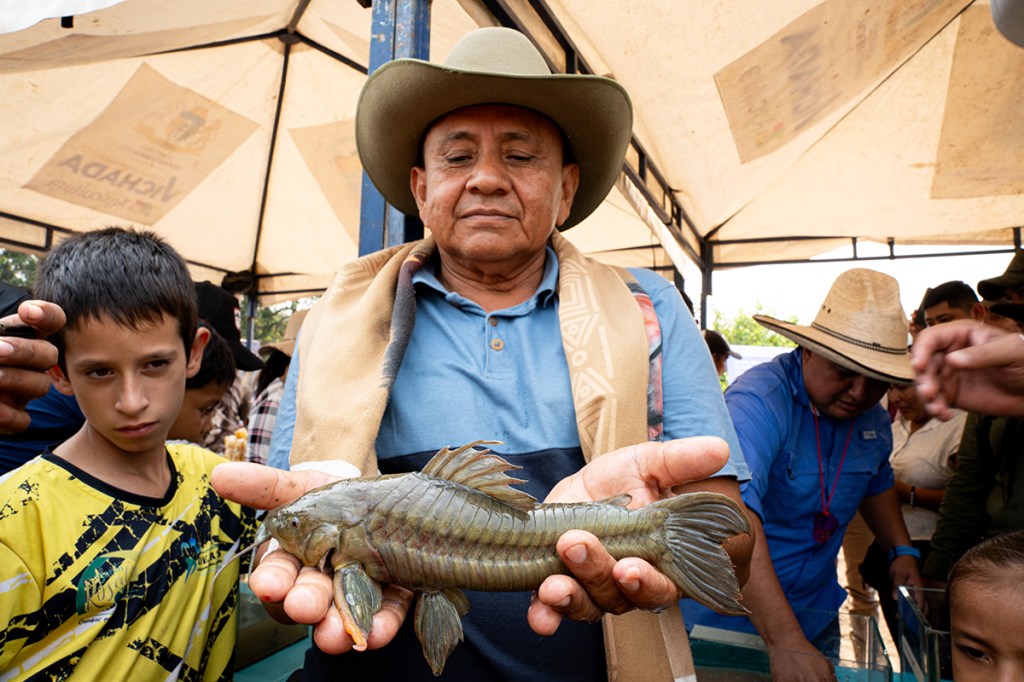The rich lands and waters of Colombia’s department (state) of Vichada are valued around the world for their biodiversity, which in Colombia, includes the local cultures and communities. La Primavera, one of the state’s six municipalities, is located in the heart of what the indigenous Sikuani Peoples called ‘witzara,’ and takes its name from the Spanish translation: Vichada. It means (in English) essentially, “where the savanna becomes a forest.”
The black water rivers flow through and across the llanos (plains) here, and as one goes further south, the savanna gradually changes to an Amazonian transition forest. The rivers, including the Vichada, Meta and Tomo, eventually flow into the Orinoquia River (also known as the Orinoco to many English speakers) and the lines between llanos and river—especially in the rainy season—often disappear.
This spectacular plains-and-rivers landscape is fundamental to local Orinoquia community culture. Songs and stories are animated by peoples’ connection to the lands and waters, and communities gather regularly in festivals to celebrate Vichada’s plants and animals. It is a dialogue with nature that nourishes the spirit of the plains’ culture and life, and much of it centers on the remarkable curito.
Meet the Curito of Orinoquia
The curito (Hoplosternum littorale) is a species of armored catfish found across much of Latin America, and parts of the Caribbean. It has a light and ossified structure with two bony plates along the body, very long barbels, and spiny pectoral fins that it can use to protect itself from predators. On average curitos are about 7-inches long.

The curito’s evolutionary adaptation—the ability to breathe air—enables it to survive when the dry season arrives, flood waters recede, and most other fish die in stagnant pools with drastically reduced oxygen levels. Some reports speak of its ability to leave a drying lagoon and move overland to another body of water, surviving several hours out of the water thanks to its unique type of breathing and the adaptation of its pectoral fins. Its ability to survive in low-oxygen environments allows it to colonize lagoons, ponds remain in the floodplain largely without competition for long portions of the year.
In addition to its cultural meaning, the curito’s presence is an expression of the region’s biodiversity and a crucial indicator of the ecosystems’ health. The presence of curito suggests the conservation levels of the water and savannas are high and creating a healthy and favorable environment where the ecological processes can prosper.
Paulo Petry, senior freshwater scientist for TNC, says, “In those ecosystems, the primary productivity happens in the floodplains, in the growth of grass, shrub plants, and algae. The water comes from the river and is decanted, generating carbon and a lot of organic matter. If the curito is present, the system is working well.”
La Primavera: The Place of the Curito and the Creoles
Although this region has always had a livestock vocation, it distinguishes itself from other municipalities in the Orinoquia by its “amphibious” character. That is, the people here live between land and water. The residents of La Primavera are proud to be the most remote Creole plains town in the Orinoquia, and the curito is very much a focus of this vibrant culture.
As singer-songwriter Francy Curbelo said, “Maybe due to the distance, the true and ancient idiosyncrasy [unique identity] of the plains is here.”

When the rainy season arrives, the rivers overflow and many Casanare and Vichada savannas are flooded. During that time, La Primavera is connected directly to the Meta River and the small town can only be reached by water or air.
During those flood pulses, the curito arrives to reproduce and its annual arrival supports the economy of many plains farming families. Thanks to the abundance of fish, including curito, crossing the La Primavera lagoon in the rainy season is to watch a celebration of the extraordinary. As one crosses some sections, the fish jump toward the boat, and some fall inside. One does not need to cast a net or offer a gram of bait to catch them. They essentially catch themselves.
Which, of course, calls for a celebration, usually held in late March at the transition time between the end of the dry season and the beginning of the wet.
Curito International Festival: 30 Years of Celebration
The town of La Primavera was already celebrating 35 years since its founding when the first Curito Festival was held in 1994. And even now, 30 years on, the people here continue to hold annual celebrations in the curito’s honor. During festival days, the town’s streets, shores, piers, kitchens, and surroundings are filled with the spirit of the plains, and the smell and taste of the curito.

It is even in the lyrics of songs: “No other fish belongs more in the plains than the Curito, brother” and “Whoever came to La Primavera and did not taste the Curito, well, they weren’t really here.” Those are expressions from this warm region, not only for its weather, which can reach 107.6 F (42 C) but also for the palpable affection of its people.
During the festival, when families go out to fish 5 a.m., they only hear the birds and the splash of the oars in the water. Fishing begins in calm waters and with the first rays of sunshine. The festivities include, among many other things, songwriting and fishing contests. This year, the winning curito measured 10 inches long.
By focusing the festival on the people, plants and animals, rivers, forests and plains—the place—the Curito Festival replaced the typical Catholic patron saints’ festivities with a greater local connection and identity. The time of the curito is a time and a place to tell the stories of the families and the communities and to remember who they are and where they come from.

[In the festivals focused only on saints], “we did not tell our own stories, of how we were created, where we were born, where we came from,” notes historian and folklorist Pedro Pablo Perez as he explains that curito are an essential part of life here. “If we do not tell our stories, it is like we do not exist.”
The Future of the Curito
Still, despite its hardiness and adaptability, its importance to local cultures and communities, the curito of the Orinoquia is becoming ever more vulnerable and its populations are increasingly at risk. The main threats come from the same factors that put the natural balance of the Orinoquia as a whole at risk: the transformation of the landscape and the loss of essential ecosystem functions created by the connection between rivers, plains and forest.
“The blocking or transformation of the flooded savannas represents an enormous risk for a species dependent on these plains,” notes Petry. “If the savanna changes, the entire process changes. The hydrological cycles of flood and drought are the mechanism by which the curito survives. The relationship between land and water here is an intricate hydrological puzzle that produces this entire region’s exuberance of fish, birds, and vegetation. If the land-water connections are altered, the curito will not be able to maintain its numbers, affecting the survival of the youngest, and therefore, the future capacity for reproduction.”

People from the region are aware of the danger of those threats. Joaquín Rivera, an illustrious vaquería singer who has composed hundreds of songs for the curito, says, “If we run out of water, we will not have the curito and will have only an imaginary festival. If the curito is not around anymore, something in the soul of the plain dies.”
That deep connection with nature reflects the landscape’s importance to the culture and spirit of that community. The biodiversity that surrounds them is part of their essence.
To help protect the lands and waters, plants, animals and people here, TNC Colombia has prioritized working in La Primavera under the conservation mosaics approach [article in Spanish], a hybrid between two apparently opposite conservation methods. The classic approach includes exclusive, protected areas where productive or extractive activities are not allowed, and the conservation-production approach is applied in areas at risk of being transformed, integrating production and biodiversity conservation at the scale of the farm or agricultural landscape.
In La Primavera, the Accelerating Impact Fund Project for Orinoquia “advances in consolidating an intercultural model of conservation and sustainable production, where the strengthening of the protection and management arrangements typical of the ways of life of Indigenous Peoples and local communities promotes conservation of its terrestrial and freshwater ecosystems,” says Diana Ardila, Leader of Protected Areas for TNC Colombia.
This includes protecting the curito and mitigating the transformations that put it—and its people—at risk.




Join the Discussion